ELECTRIC, WITH AN EDGE
A Single Phase pad-mounted transformer is a special type of transformer that you can use in a variety of applications. It has two AC coils, each wrapped around a separate iron core. This type of transformer is compact and easy to install. It can be easily relocated as needed because it doesn’t use an oil reservoir to maintain magnetic flux.
These transformers are not protected in the way overhead lines and substations are. Pad-mounted transformers are visually noticeable, so they serve as a marker for your home’s electrical wiring. And because they can be located anywhere on the property, there is always the potential of environmental risks like faulty wiring or power surges.
These transformers are so powerful that even the slightest spark will blow up the fuse. A high-voltage transformer is a complex arrangement of delicate parts. It can be damaged easily by any number of factors, including poor design or transport damage.
It is why each transformer must be triple-checked for safety before they’re shipped out to ensure complete protection.
Daelim has been supplying the power tools and industrial market for many years, and they have a lot to offer. Daelim transformers are high-performance, high-efficiency, and safe. Daelim also meets ANSI, IEEE, CSA, and IEC standardization requirements. If you’re looking for a high-performance, high-efficiency, and safe Pad-mounted transformer, you can place your trust in Daelim.
A pad-mounted transformer main system configuration is commonly used in electronics. It is a type of transformational power distribution system, which is an electrical distribution system that allows multiple transformers to distribute power to all connected loads.
And the use of single-phase pads instead of wire leads to less voltage drop and lower heat generation over other types of transformers.
More importantly, this transformer is good for basic household needs like lighting, heating, and air conditioning. A three-phase transformer is better for commercial use like hydroelectricity, but it’s bulky and expensive. The main difference between the two is that single-phase transformers don’t have a neutral wire.
The configuration of a pad-mounted transformer is either a single-phase or three phases. The single-phase configuration has only one winding, whereas the three-phase structure has three windings.
For many years, pad-mounted transformers were used to convert 230V AC to 24V DC, but they have been replaced by switching power supplies.
Essentially, a transformer is a device that will allow a voltage to be raised in one direction and lowered in another, so this device needs to have a “primary” and “secondary” winding. The primary winding is connected to the voltage source, while the secondary is connected to the load.
The Single Phase Pad-Mounted Transformer was used in the United States from the late 1800s to the early 1900s. It was designed by Dr. George Westinghouse, one of the founders of General Electric. The single-phase transformer uses just one winding for all 3 phases, which helps reduce size and weight while also reducing cost.
Additionally, the Single Phase Pad-Mounted Transformers are used for electrical power distribution. They allow a single motor to use a large amount of power up to a certain limit.
The Single Phase Pad-Mounted Transformers is the most common type of transformer used in North America and Europe. Still, you can also find it in systems that include three-phase transformers.
Lastly, the Single Phase Pad-Mounted Transformers is designed with a circuit breaker and a high voltage winding. They typically contain more than one magnetic field inside them, along with brown and blue iron cores, which help to distribute the magnetic fields evenly.
Transformer manufacturers have been aware of the advantages of a single-phase system for a long time. They have designed transformers with this in mind.
The advantages of single-phase systems include reduction in maintenance costs, possible savings in construction costs, and increased availability of power from renewable sources.
And the advantages of a single-phase system transformer are significant. Single-phase transformers are less expensive than three-phase transformers, so they’re more likely to be used in home and commercial applications.
Lastly, they also offer low voltage protection required by legislative codes, making them ideal for many system designs. Additionally, the single phase’s simplicity means that it is easily accessible and easy to navigate.
A single-phase transformer is the most common type of transformer. This type is used in a wide variety of applications, but it does have some disadvantages. The unit has only one winding that must be energized at all times, which means that you can’t use it with an inverter.
A single-phase transformer is an alternating-current (AC) power transformer that changes the current-voltage to match the electrical system’s voltage. The more usual type of power transformer is a three-phase system transformer, which steps up or steps down alternating current to deliver greater or lesser output voltages.
Three-Phase Transformer Designs are used in manufacturing facilities to design rotating electrical devices. Such designs typically use three-phase series-connected three-wire windings, with a separate winding for each phase.
Furthermore, this allows the device to be switched from either AC or DC to the desired voltage. They are also used in power plants and water processing plants to provide a stable source of power.
And they are available in sizes ranging from 10 kilovolts to 5500 kilovolts. They can safely handle high voltages with no risk of explosion. Three-phase transformers come in various designs, but all have three coils wound on laminated paper or aluminum sheets.
Additionally, three-Phase Transformer design is a process in which transformers are designed and built to suit the needs of the project at hand. They are typically produced using CAD software that allows for easy visualization and design of components and transformers.
This process uses standard software tools integrated with other engineering disciplines such as structural, electrical, and mechanical engineering.
A three-phase system transformer can help reduce the voltage stress on a system by up to 50% over a double-phase system, which may increase the transformer’s life.
As well as reducing operating costs, this type of transformer also offers greater security against start-up failures by automatically shutting down during overload periods.
A three-phase system transformer is the most efficient transformer available. It also provides double the voltage of a standard system transformer, which translates into less energy consumed for each unit of electricity produced.
With a three-phase system, you will never have to worry about anyone else’s power going out again. Unlike the traditional two-phase system, three-phase systems use different phases.
Three phases can also be used as backup power for larger loads like hospitals and large buildings.
The disadvantages of a Three-Phase System transformer are that it uses three separate transformers, which take up more space and increase the project’s cost. Customers may also find it difficult to locate the switches, which can confuse them. Finally, there is an increased risk of tripping current during installation.
Additionally, the three-phase system uses three separate circuits to connect the primary source of electrical power to your home. It is more expensive than a single-phase system.
The transformer box, housed in the wall, must be powered by electricity from the primary power source or stop functioning.
Lastly, a Three-Phase System transformer is a device that converts the three-phase alternating current of high voltage to direct current. However, these transformers operate at a relatively low voltage. You cannot use them with commercial power systems or industrial loads.
Transformer three-phase dual power supply automatic switching
The use of Single Phase Pad-Mounted Transformers is very common in various industries, from manufacturing to process automation.
This technology is used to transfer electrical power from the primary source to a secondary load. The current transformer design provides an efficient and cost-effective solution for many applications.
A single phase pad-mounted transformer is designed to be mounted to a pad and be connected to either a bus or feeder. The power rating of such transformers ranges from 3KVA up to 220 KVA. The input power must be at least 35 volts, and the output voltage must exceed 208 volts.
A single-phase pad-mounted transformer is a two- or three-way electrical transformer with one winding or plate connected to one phase of the electrical power supply.
This transformer’s other winding, or plate, is connected to the neutral (or common) wire and the center tap for one phase of the power supply.
Furthermore, a pad-mounted transformer is a step-up transformer that places the primary winding on the outside of the transformer body, usually mounted on an insulating base. It’s used to connect one phase of an AC power supply to another degree or with a single-phase load.
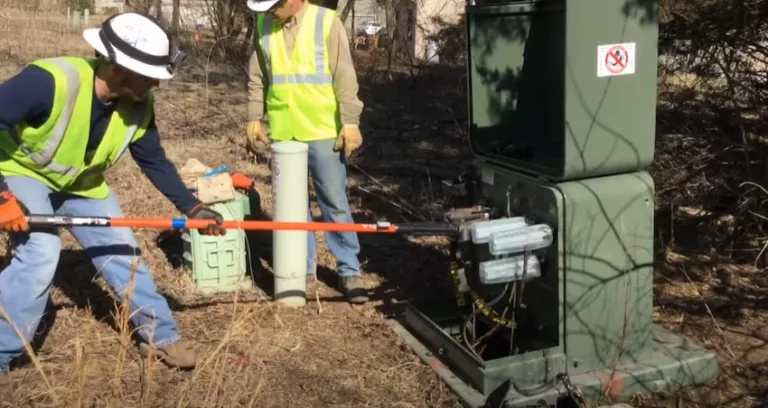
A single phase pad-mounted transformer is typically installed for permanent power distribution to the load. It is used in fixed installations, such as lighting fixtures, electric motors, and elevator equipment.
You can also use a Single Phase Pad-Mounted Transformer to provide temporary power to a device or group of machines for various purposes.
The Single Phase Pad-Mounted Transformer is an AC/DC power converter that changes the input to the output voltage. It can continuously vary the input voltage in response to input current or input voltage, utilizing a transformer with one primary coil and two secondary coils (direct current) or using a transformer with two primary coils (primary current).
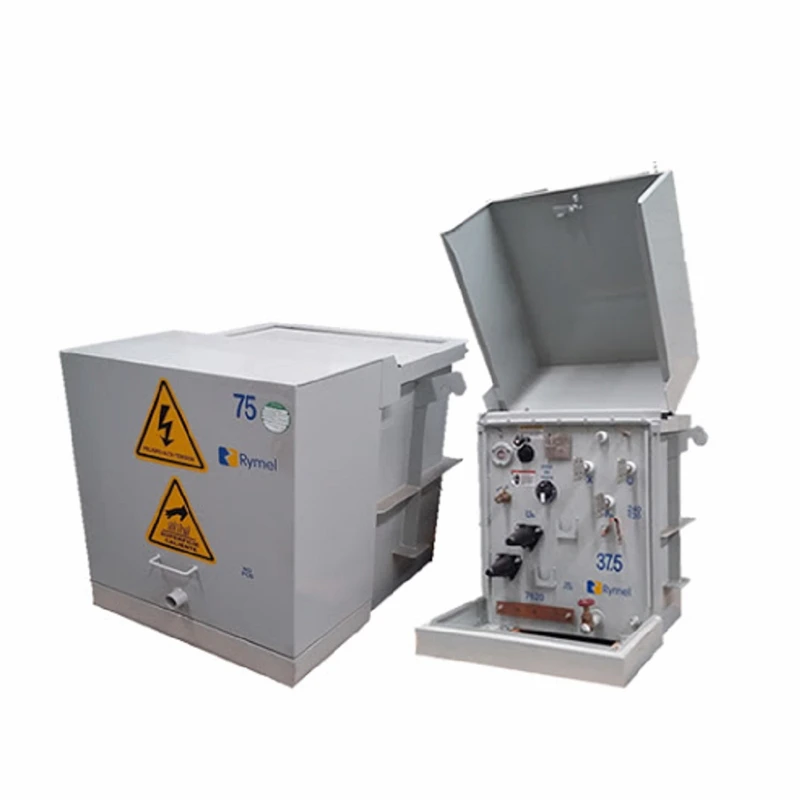
Aside from these, the single phase pad-mounted transformer is typically used in the power distribution circuit of a single-phase supply. This type of transformer is generally mounted on an insulated metal base and connected to the earth potential.
The single phase pad-mounted transformer has a core with a winding capacity of up to 5000VA. You can configure it for upwards of 4000 VAC (60Hz).
Additionally, using this transformer is that this type of transformer fits into small spaces and can be mounted on most surfaces. It makes them suitable for most applications. Other than the cramped locations, they do not require any interruption in service with their low self-noise levels.
Lastly, the Single Phase Pad-Mounted Transformer is perfect for the location with limited space. You can install it in tight places that are hard to reach with traditional transformers. A pad-mount transformer allows for a more robust power distribution system in an emergency, where there might be no other way to power emergency lighting.
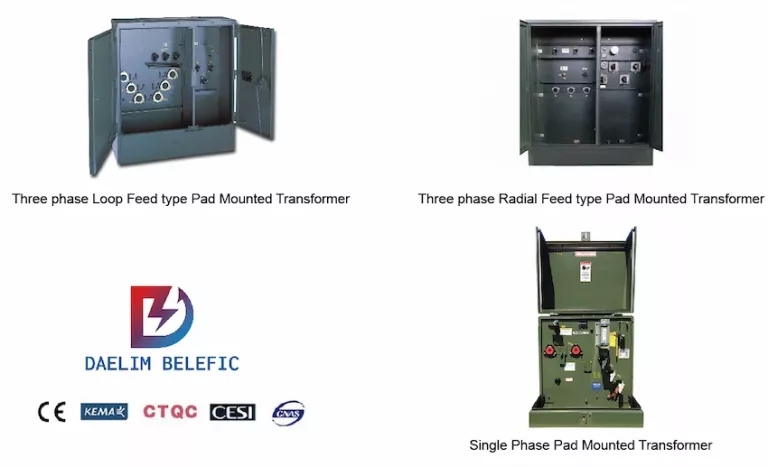
Transformer manufacturers have been using single phase pad-mounted designs for decades. Today, such transformers are used mostly in the lighting industry and automotive applications.
And by eliminating the need for housing, these single-phase pads span the transformer’s core for efficient heat dissipation and minimize transformer size and cost.
It is important to note that a single phase pad-mounted transformer is the perfect solution for any size of electrical installation. You can appreciate many benefits, including a low profile design, low cost, reliability, and efficiency.
And with the right transformer, your application will be safe and efficient.
As a transformer pad-mounted unit, the Transformer is heavy and bulky, making it a challenge to install in a small area. The low voltage can damage or shock any person touching the transformer.
There are also safety risks associated with the transformer’s electrical current, as one must be careful not to touch any part of the unit while it is powered up. Another disadvantage is that when troubleshooting a system, the transformer may only operate at certain operating points.
Identically, using a single-phase pad-mounted transformer may impose the lack of electrical isolation. Isolation allows power to flow through one side of the transformer without flowing through the other.
And this creates an isolated magnetizing side that you can use for any application, such as a capacitor or relay coil.
When a residential transformer is not properly mounted, it can have a variety of health risks. Improper mounting can cause an electrical short circuit that may result in fire or other serious damage. In addition, improper mounting can lead to reduced efficiency and reliability for your home’s electric system.
Residential pad-mounted transformer health risks may include, in some cases, residential power transformers can become a fire hazard when they produce excessive heat. In other cases, the transformer can release a chemical or metal vapor that could be hazardous to nearby residents.
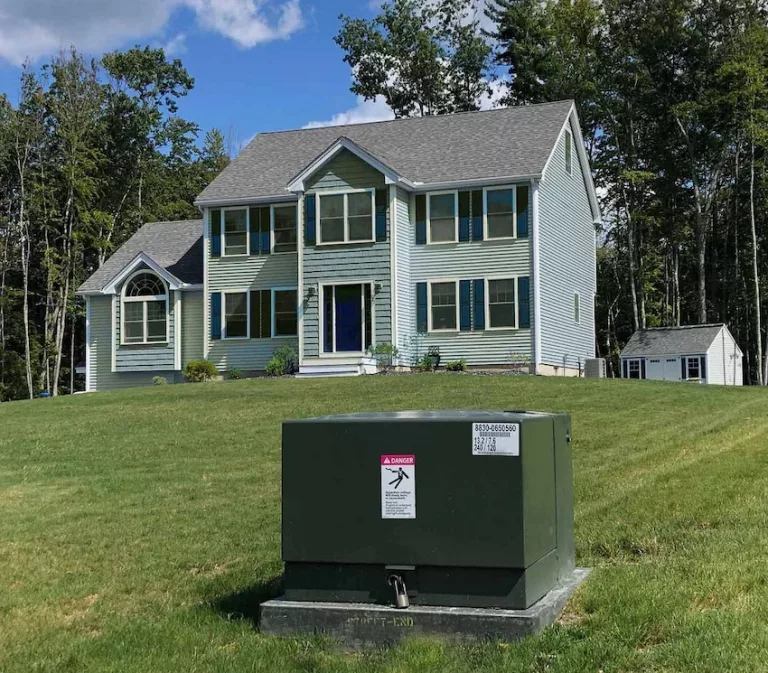
Generally speaking, residential generators are an excellent way of staying safe from natural disasters and outages while still having power during a blackout.
Identically, managing risks associated with pad-mounted transformers is important to prevent fire, explosions, or other damage. Several remedies can be applied to reduce the risk of these dangers.
One common practice is using a pad-mounted transformer with an isolated transformer at the primary side, which protects the customer from any possible errors induced by the power supply.
The lifespan of a pad-mounted transformer can vary depending on the type you buy. A typical pad-mounted transformer usually lasts anywhere from six to twelve years.
Also, the average lifespan of a transformer without mounting ears is two to three years. Still, this number may be much higher depending on the quality.
Lastly, transformers typically last for thousands of hours and can even last up to 10,000 hours. It is because they constantly recharge their batteries by using the power from the mains electricity.
As long as you don’t turn off your power supply, these transformers will work for a very long time.
The terms are often used interchangeably, but there are some major differences. The main difference is that a pad-mounted transformer is mounted to the floor. In contrast, a pole-mounted transformer is mounted on an overhead beam.
It has implications for how you can use these transformers in your facility.
Additionally, a pad-mounted transformer is typically smaller, so it can be mounted on the wall. They are also more affordable than a pole-mounted transformer.
And the biggest difference is that the power source is built into the unit, making them easier to maintain.
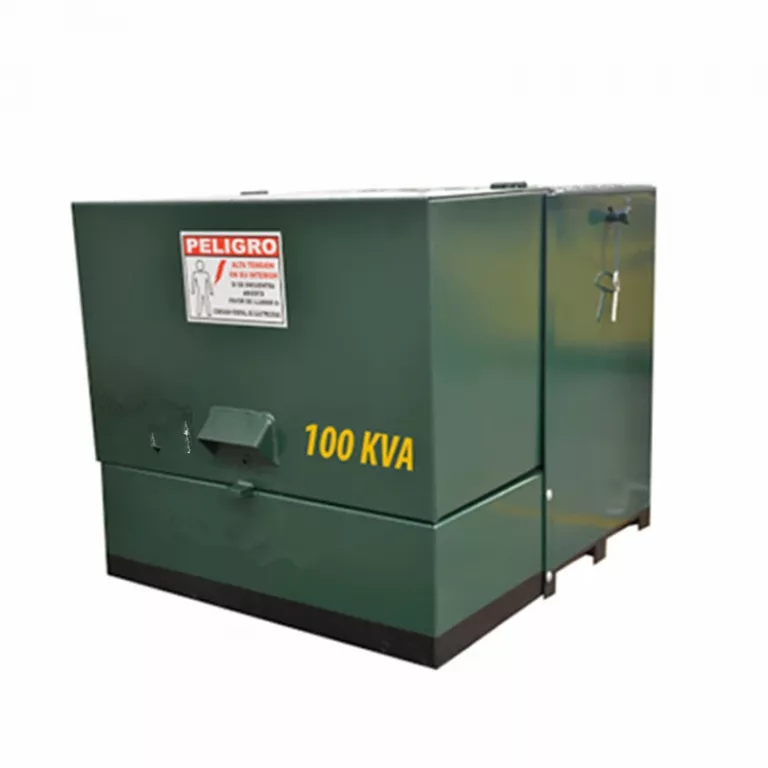
Every house doesn’t have a transformer because it’s on the density of the location. For example, more people stay close together in an urban setting, and you get more pollution.
And you also get less sunlight than in the countryside where houses are farther apart. These factors all contribute to poor insulation, which requires transformers to power more homes.
Usually, a safe distance from a transformer is 10 feet, allowing room for people and animals. As a general rule, the safe distance from a transformer is to be under the following guidelines:
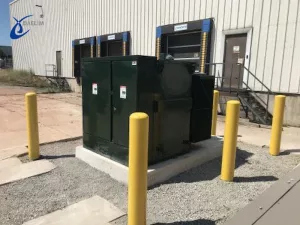
When you are near an electric transformer, it is important to keep a safe distance, so you don’t get shocked. If the transformer’s insulation gets damaged, it can release high-voltage power that will travel through metal objects like cars and water pipes.
Lastly, the safe distance from an electric transformer depends on the type of transformer. The smaller transformers are about 40 feet in diameter, while the larger transformers are over 300 feet. If you are only working with a small transformer, you can safely stand 10 to 15 feet away from it.
There are several signs that a transformer has blown. Suppose your transformer is suddenly noisier than usual. In that case, this could be a sign that your voltage is too high or a shortage in the power system.
Additionally, the most common signs of a transformer explosion are the smell of burning insulation or plastic, smoke coming from the transformer, or if you notice that it’s no longer in the same position as when you were last there.
Transformers are generally found in the basement, but they may be in a utility room or garage in some cases. They can also be built into the walls and ceilings and, in some cases, even outdoors.
The high-voltage power supply is transmitted directly to the residential load facility via a 10kv cable in a single-phase power system. From there, it is distributed to private homes via single-phase pad-mounted transformers, which decrease energy loss due to their short low-voltage lines. These transformers are also referred to as high voltage/low voltage solitary stage oil immersed pad-mounted transformers.
The single-phase pad-mounted transformer is comprised of a single-phase transformer, a high-voltage area, and a low-voltage area, all developed with a portable format. The transformer’s core is obtained with an R-type winding configuration that minimizes energy usage and noise. The high and ground voltage windings are thoroughly wound on a specialized core winding equipment to make certain high accuracy. Additionally, the high-voltage compartment includes a Cooper Company sleeve from the United States for linking the elbow-type cord plug with load-breaking capability.
The elbow-shaped wire connector can be attached and detached when the transformer is totally loaded. The sleeve is linked to the elbow-shaped wire port, and the live part is secured within the insulator, creating a totally insulated setting up. The high-voltage end’s surface area is not billed, which can assure individual safety reliably. Control buttons and determining gadgets can be installed in the low-voltage compartment.
In a single-phase power distribution system, power can be supplied via either a single-phase two-wire system or a single-phase three-wire system. In the two-wire system, both the high and low voltage sides of the transformer have coils with a voltage proportion of 10:0:22. The low voltage side X is based directly through the tank grounding factor. On the other hand, the three-wire system includes one coil on the high-voltage side of the transformer and 2 rings on the low-voltage side, with a voltage ratio of 10:0:44 (0.22 ).
The voltage between A and X is 10kv, and the voltage can be predetermined by ± 5% through the non-excitation tap-changer. For the single-phase three-wire system, the low voltage adopts the split operation link method; that is, the two collections of coils a1, x; a2, x are independently drawn to link to the tons, and X is straight grounded through the fuel tank place, the output of both low-voltage coils is 220v, and the ability is the ranked capability. 50%, creating a1, a2, x single-phase three-wire system.
In the single-phase two-wire system, the parallel link strategy is used, where a1 and a2 are attached as a, x, and earthed with the gas storage tank grounding factor, causing a voltage of 220v and a capability of 100%. If a low voltage output of 440v is called for, the collection connection approach is used, where x stays ungrounded, and the voltage between a1 and a2 is 440v, with a capability of 100%.
(1) The line loss is significantly reduced. The 10 kV high-voltage network has actually replaced the original low-voltage foundation network. The power supply mode takes on 10 kV to the household, and the power circulation presumes “little capacity and thick circulation factors,” which minimizes the line loss on the low-voltage line.
(2) The voltage high quality is ensured. Because the 10 kV, high voltage is straight linked to the individual, and the low-voltage line is short, just the part of the link line, the real voltage of the user is close to the ranked value and is secure, and the voltage high quality is high.
Enhance the reliability of electricity supply substantially by executing a method of utilizing small, closely spaced power factors. This approach causes alterations in city and backwoods, causing enhanced power supply dependability. Additionally, the easy setup procedure of single-phase pad-mounted transformers minimizes crash feedback times, better strengthening the power supply’s integrity.
Improve the aesthetic allure of the living space. The single-phase transformer used in the single-phase pad-mounted transformer functions sophisticated R-type injury core modern technology, making certain minimal sound also at maximum ability. The transformer is put in a green belt, adding to the realization of a modern-day, smooth suburb with an unhampered landscape.
When a single-phase pad-mounted transformer functions and the lots is unbalanced, it can create a negative sequence existing on the 10 kV circulation network, causing a three-phase imbalance in the circulation voltage. Nonetheless, this impact is marginal and does not effect other current protections. Considering that the out of balance load does not generate a zero-sequence current, it does not interfere with the zero-sequence defense set up in the 10 kV distribution network. Consequently, utilizing a single-phase pad-mounted transformer will not cause problems with relay defense or affect interaction systems.
Rural individuals with moderate energy needs experience a relatively consistent meter loss, and the low-voltage line loss does not significantly lower. Because of this, a single-phase pad-mounted transformer with a capability of 10 kVA or less is suggested. Additionally, it’s important to note that a single-phase pad-mounted transformer can not offer three-phase electricity, which might be necessary for certain individuals.
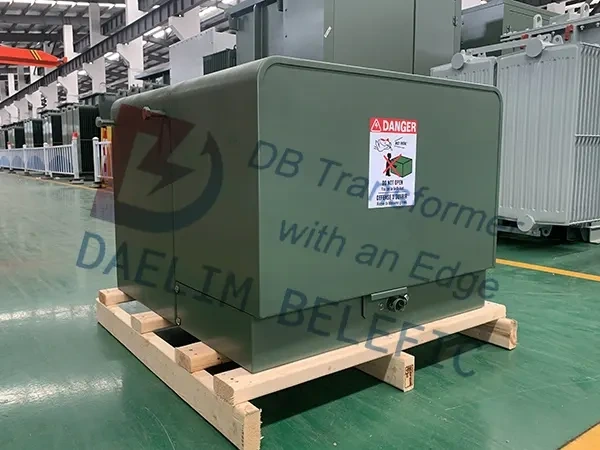
(1) The single-phase pad-mounted transformer coincides as the three-phase box transformer. It is commonly used because of its versatile scheme, little footprint and practical use. In actual usage, the single-phase pad-mounted transformer ought to be combined with the three-phase box transformer, and steps need to be taken according to regional conditions.
Complying with the concept of “small capability, densely dispersed points, short radius, and high load price” is essential, and taking full advantage of the loss decrease advantages of a single-phase power supply is necessary. In residential areas with simple single-phase loads, a single-phase pad-mounted transformer offers a trustworthy and efficient distributed power supply. This technique makes sure high voltage high quality, marginal low-voltage line loss, practical maintenance for customers, and very little interference between transformers.
(3) In metropolitan property quarters, suite locations, and various other cable-supplied places, making use of a three-phase box transformer is not proper. Still, a single-phase pad-mounted transformer must be used, and the transformer capacity need to be fairly picked according to the size of the lots to boost the lots rate.
When there is an inequality in the three-phase lots, it can lead instability in the three-phase current, reducing the bandwidth of the circulation line and boosting line losses in the 10 kV grid. To maintain three-phase tons equilibrium when using a single-phase pad-mounted transformer for power supply, it is essential to attach the transformer to the three stages as uniformly as feasible.
(5) The single-phase power supply mode affects using three-phase electric devices in backwoods, such as water pumping, threshing, and facilities building. As a result of the little power consumption of country lines, it is appropriate to configure a 10-30 single-phase pad-mounted transformer in all-natural villages of fairly concentrated residential areas in locations without three-phase tons. Nevertheless, with the change of country power grids and the reduction of country electricity prices, the pastoral electricity tons will certainly even more raise. Its financial advantages will be boosted by minimizing line losses. There are many three-phase electrical devices such as water pumping and threshing in rural areas. According to the real neighborhood conditions, proper planning based upon the concept of “little capability, dense distribution of factors, and short distance” ought to be executed with the three-phase transformer to play the role of a single-phase pad-mounted transformer or three-phase transformer. Benefits of single-phase transformers.
(6) For customers that require three-phase power, three-phase box transformers or three-phase transformers can be used, or more single-phase pad-mounted transformers or single-phase transformers can be connected in a V shape to meet the three-phase tons requirements.
When you need to find more than just existing transformers, Daelim’s Transformer Service Center can help you design and produce distribution transformers that meet your unique needs.
We have our own factory and a professional team of engineers, which can design and modify application requirements that meet all your conditions.
Download Resource
After filling in the contact information, you can download the PDF.